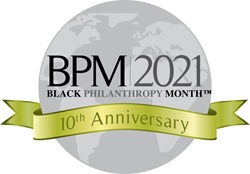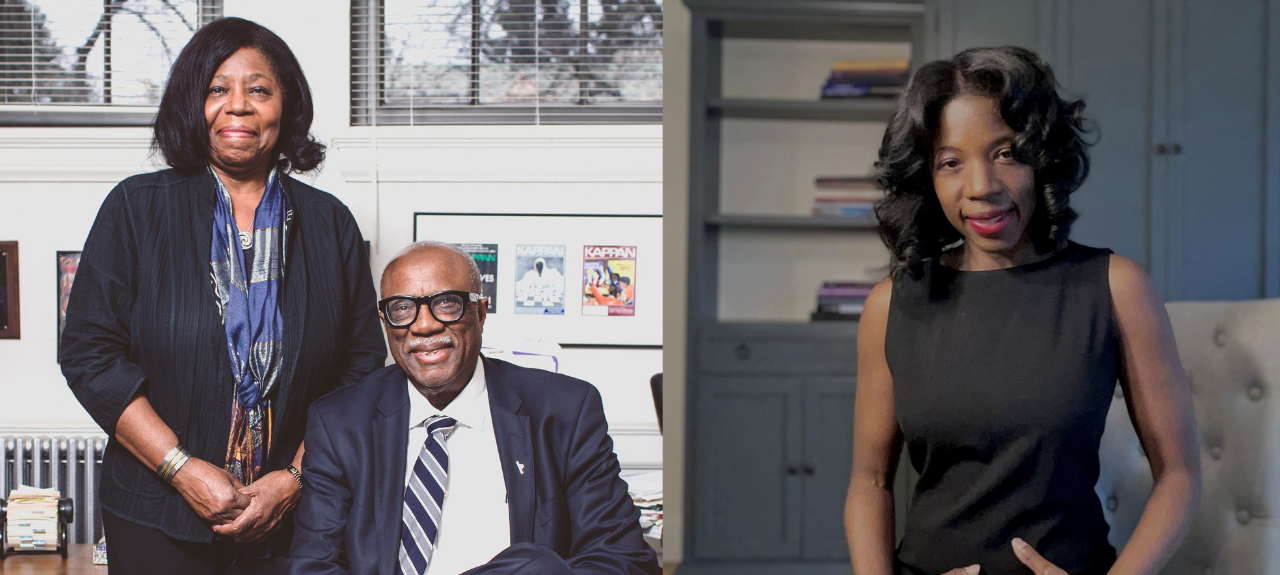A question—more so, a charge, from Seattle Foundation Chief Engagement Officer Stephanie Bray was shared at the last ‘In Conversation, In Community’ event. “Now that we know, what are we going to do?” Her question came after a poignant discussion about why donors should provide funding to Black-led and rooted organizations.
The panel of leaders from Village of Hope, and Community Passageways, pillars for their Black-led nonprofits, shared powerful reflections with attendees, which prompted thoughtful conversation. The exchange was also an excellent opportunity to highlight Seattle Foundation’s recently launched Black-Led Joy and Wellness Fund, meant to support the well-being of leaders like those we heard from who are working on the front lines of BIPOC communities across the greater Seattle region. It’s the first grant program that has launched as part of Seattle Foundation’s new guiding framework, REPAIR (Racially Equitable Philanthropy Aimed at Initiating Reparations), a five-year, $25 million commitment to the Black community of King County. The equity journey for each human being is a very personal one but learning sessions such as ‘In Conversation, In Community’ can be helpful. Intimate, thorough conversations about the impact of inequity can play an instrumental role in helping to achieve a better sense of understanding, perspective, and empathy.

This event coincided with Black Philanthropy Month, launched 10 years ago by Dr. Jackie Bouvier Copeland and the Pan-African Women’s Philanthropy Network (PAWPNet). Black Philanthropy Month is now celebrated across the country and world to educate audiences about the importance of giving to Black-led organizations and to highlight the contributions of Black and African American philanthropists to the communities where they live, work, and serve.
We celebrate philanthropists like Dr. Cherry A. McGee Banks and her daughter, Dr. Patricia A. Banks, both well-respected educators. Their family’s philanthropy has touched many people across the Pacific Northwest. Both are excited to know that Black Philanthropy Month and its long history are being acknowledged, including by the Washington state Governor’s office, and that more people will have the opportunity to learn about the foundational elements in the Black and African American community that were built through the philanthropy of Black and African American people.
“Philanthropy isn’t necessarily a term that is widely used in the African American community and yet the essence of the term is an integral part of Black identity,” they shared. “Black Philanthropy Month provides an opportunity to acknowledge and give voice to the financial support as well as the time and energy African Americans give to support Black organizations, institutions, and individuals.”
For the Banks family, the concept of giving is not new: it’s intertwined and embedded in their generational history. Black philanthropy is integral to the Banks legacy, according to Patricia and her mother. “The Banks family embraces a philanthropic tradition that involves giving to organizations and individuals involved in education and in the arts,” they said. Substantial contributions to institutions, including funds for the establishment of the James A. Banks and Cherry A. Banks Professorship in Multicultural Education at the University of Washington, among several other prominent gifts, are demonstrative of their compassion and care for their community. But Black Philanthropy cannot be fulfilled by one group of people—it needs the whole community’s support.
To that end, the Banks women are encouraging others to participate in giving. Patricia is a Professor of Sociology at Mt. Holyoke College who studies Black philanthropy and recently published a book entitled, Diversity and Philanthropy at African American Museums, which examines why patrons support Black museums. Because their family has deep ties within the community, they have suggested several giving opportunities, including to the Northwest African American Museum, for those who simply don’t know where to get started.
However, just because people may be unaware of the philanthropic impact of the Banks family and other Black and African American families across the state doesn’t mean they aren’t happening. “Philanthropic activities in the Black and African American community are rarely covered in city-wide newspapers, television programs, and media designed to reach the broader community,” they said. “Consequently, it is invisible to many people outside the African American community who are unaware of the extent and impact of philanthropic activities carried out by African Americans in the Black community.”
Traditionally, people assume philanthropy requires a person to give a large sum of money to an individual institution, but that’s very limiting and excludes the everyday contributions Black and African American people have been making in their communities for long periods of time. Church groups and fraternal organizations are good examples of launching pads for Black Philanthropy as they help provide support for scholarships, and for organizations that provide food and other services. That giving spirit permeates Black-led organizations, particularly nonprofits that often require a great deal of sacrifice from its leaders.
The ‘In Conversation, In Community’ discussion highlighted the hidden cost of trauma faced by Black organizers who are helping others navigate the systemic inequities that disproportionately affect their communities. Giving is expressed in many forms—funding is undoubtedly important and needed, but the event panelists are leaders who are also exerting a great deal of mental, emotional, and physical support to help preserve the well-being of others, though they may not be receiving what they need to take care of themselves.
In partnership with Byrd Barr Place and Cardea Services, Seattle Foundation published The Case for Investing in Black-Led Organizations in King County. The 2020 report found that 73% of the researched, Black-led organizations focused on community-building and the surveyed groups served anywhere between 15 to 29,000 people a year. Meanwhile, about 73% of the organizations only had five or fewer full-time staff members, and over 90% relied on volunteer support. Moreover, 72% had an annual operating budget of less than $749,000. Imagine having to provide living wages to workers, maintain your organization, provide resources to others (often in under-resourced areas) with so little funding. It’s fair to assume that there’d be little room to provide funding to support well-being.
For this reason, it’s important to reiterate the value and importance of the Black-Led Joy and Wellness Fund. Healing generational trauma does not have to be the singular testimony of Black people—stories of joy, rest, and prosperity should also abound and thrive in the communities where Black nonprofit leaders serve. Supporting the wellness fund, Community Passageways, Village of Hope, or Northwest African American Museum as suggested by the Banks family, as well as other Black-led, Black-rooted organizations, builds capacity for more joy—which inherently contributes to wellness.
The question that remains is: now that we know, what are we going to do? Giving to a Black-led organization for Black Philanthropy Month, and beyond, is a great step forward on the journey toward equity. Click the button below to donate to REPAIR and read more about Black Philanthropy Month, here.

